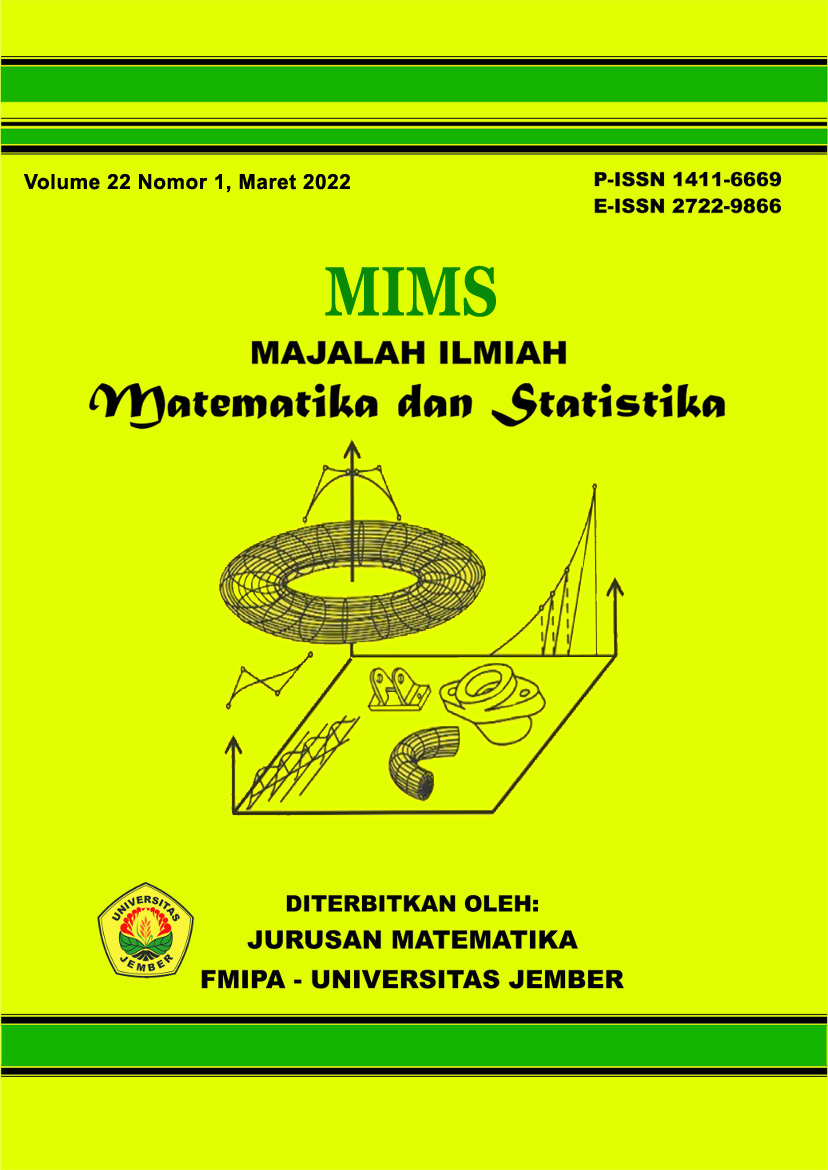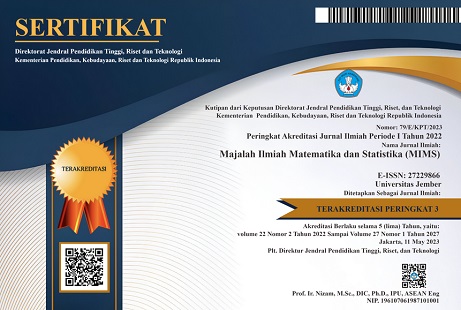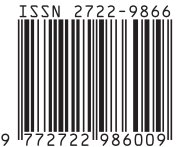ANALISIS PENDEKATAN STATISTIK DAN FUZZY MAMDANI DALAM PREDIKSI PRODUKTIVITAS PADI
DOI:
https://doi.org/10.19184/mims.v22i1.30304Abstract
Indonesia has fertile soil, so it is suitable for agricultural land. However, Indonesia still needs to import rice from abroad because rice productivity in Indonesia is often inconsistent. Therefore, rice productivity in Indonesia needs to be estimated for the future. This study aimed to determine the amount of rice productivity from production factors and harvested area that occurred in Indonesia from September 2021 to June 2022. The data used were rice production and rice harvested from January 2019 to August 2021 sourced from the Central Statistics Agency, Indonesia. Data processing in this study uses the Polynomial Regression method to determine predictions of future rice production and harvest area and the Mamdani Fuzzy Logic method. Data processing in this study uses a prediction method, namely the Polynomial Regression method, to determine future production and harvested area predictions and the Mamdani method of Fuzzy Logic for decision making. The results obtained from the Mamdani polynomial and fuzzy regression methods, predictions of rice productivity in September 2021 to June 2022 have increased in the range of 23.33 to 27.91.
Keywords: Fuzzy Mamdani, polynomial regression, prediction, rice productivity
MSC2020: 62A86








